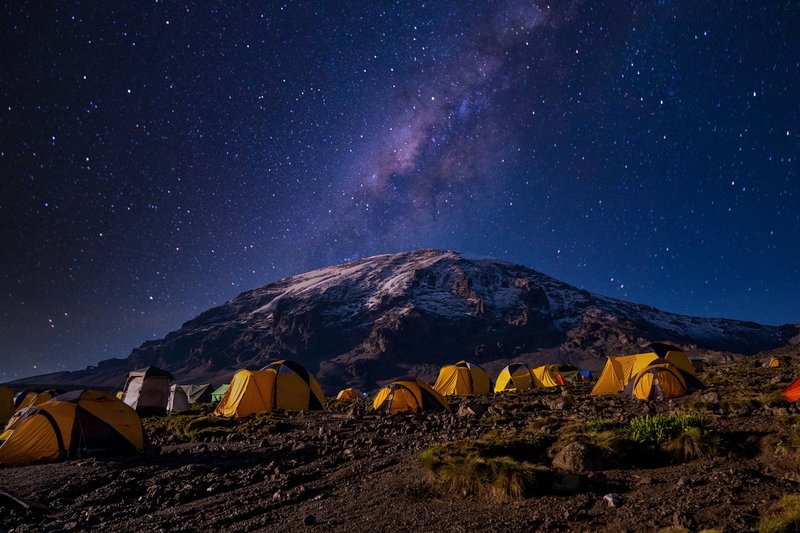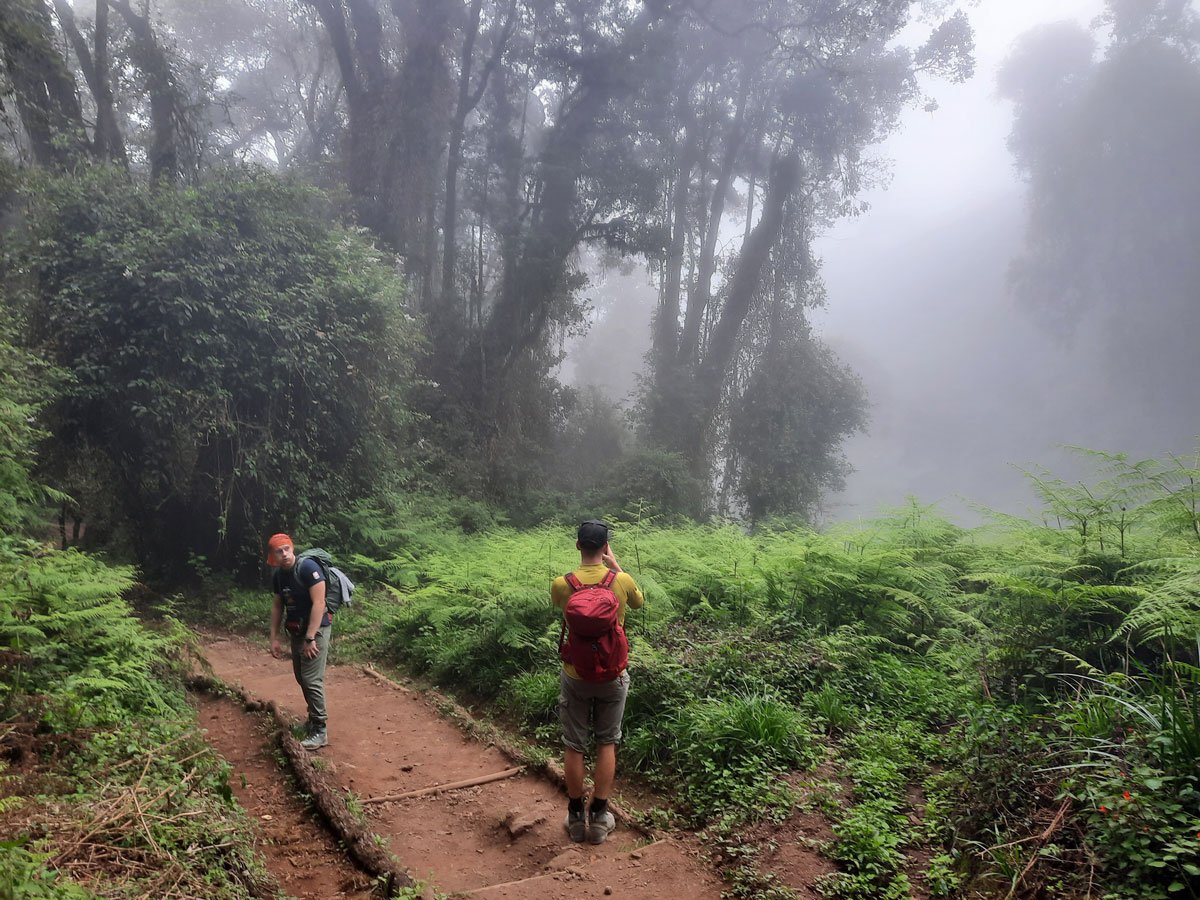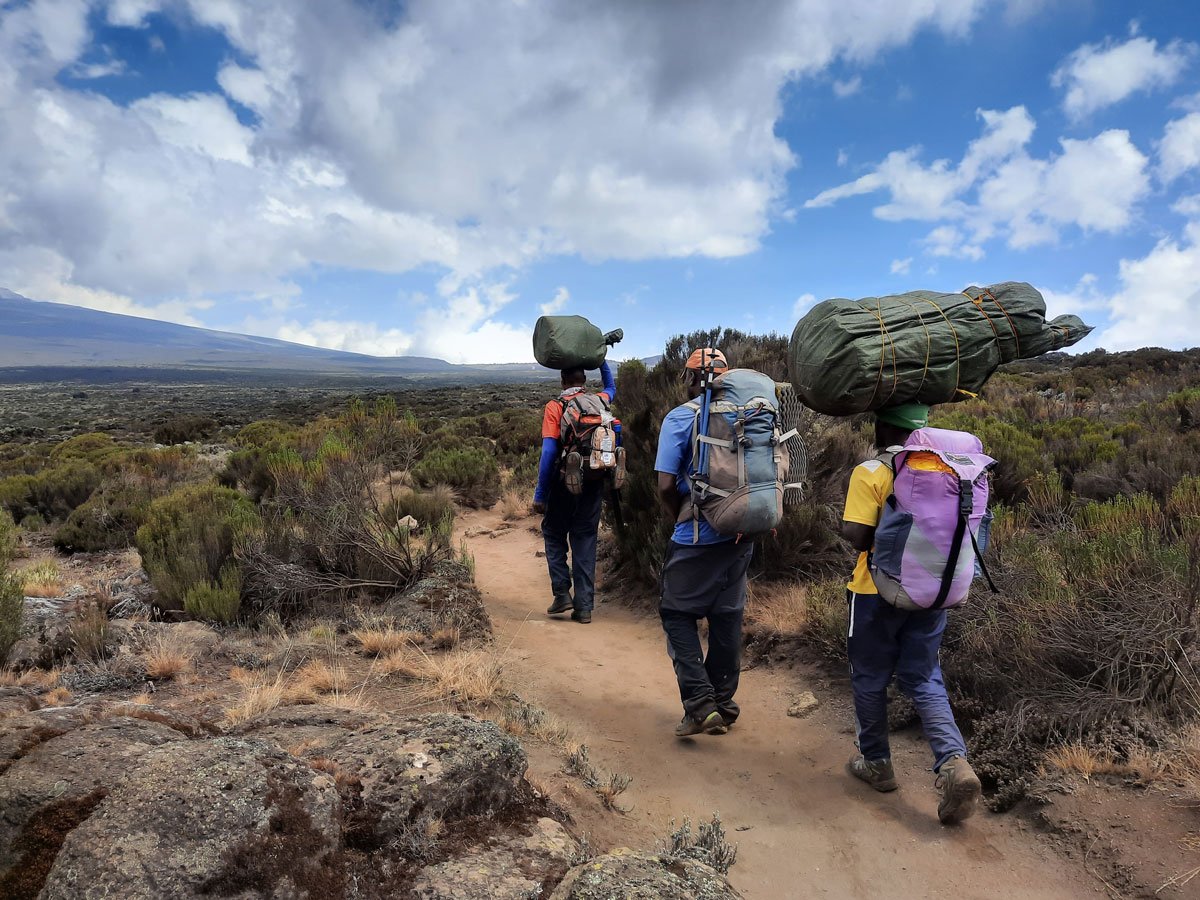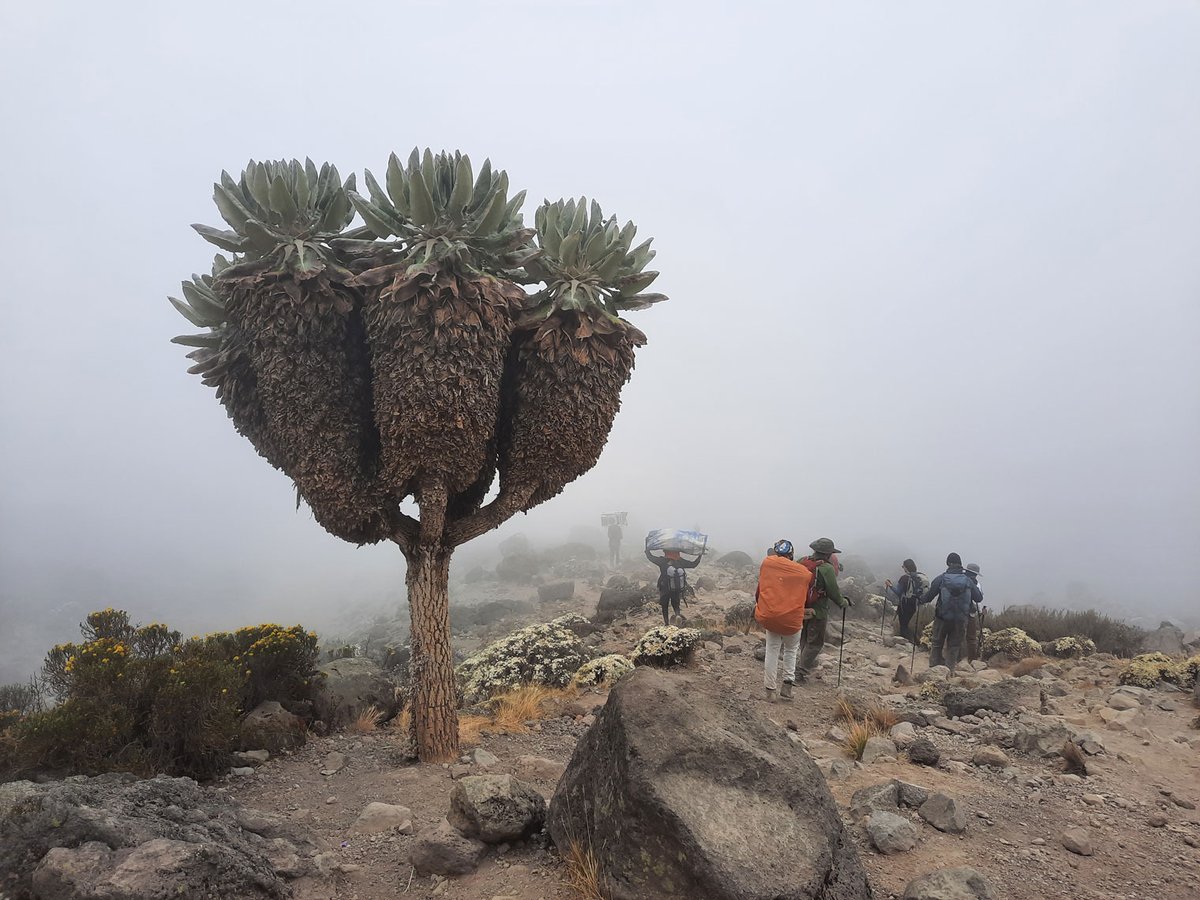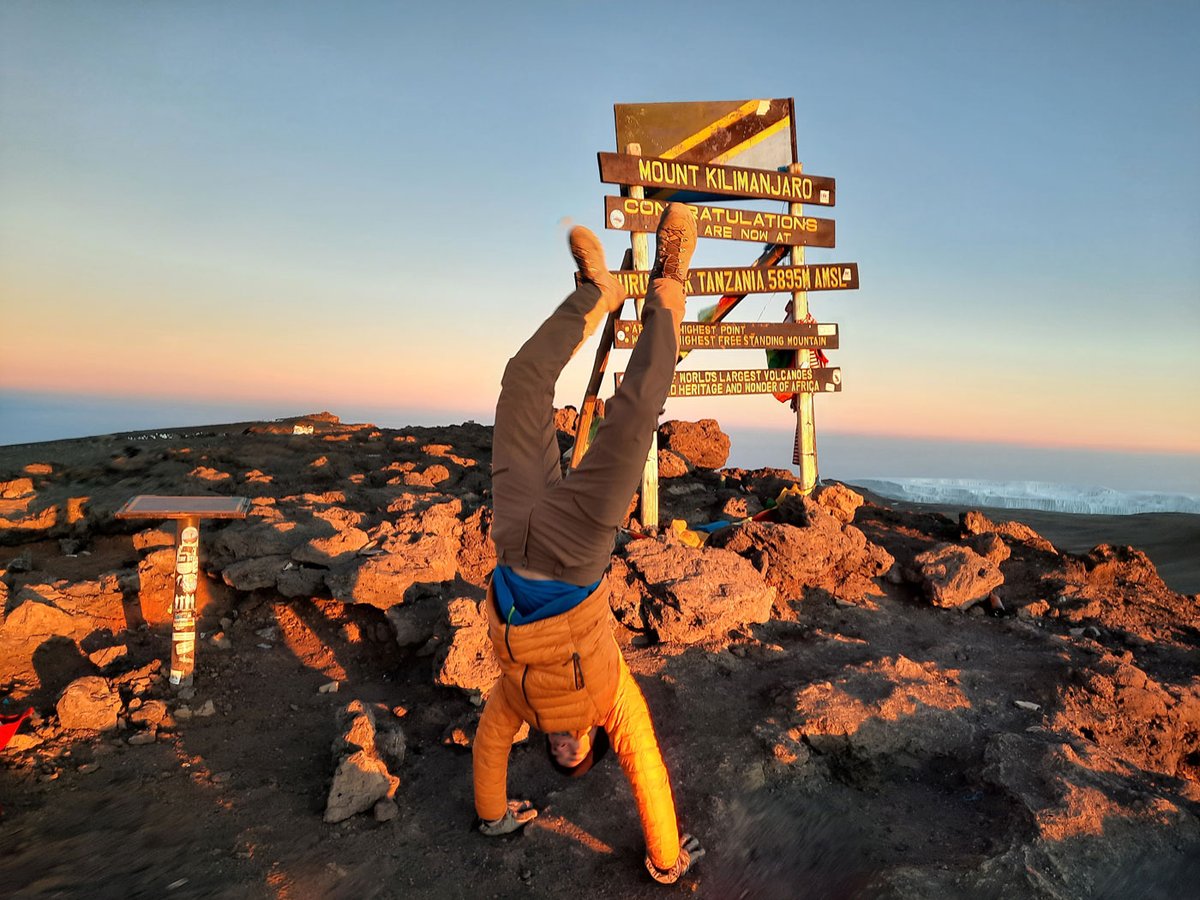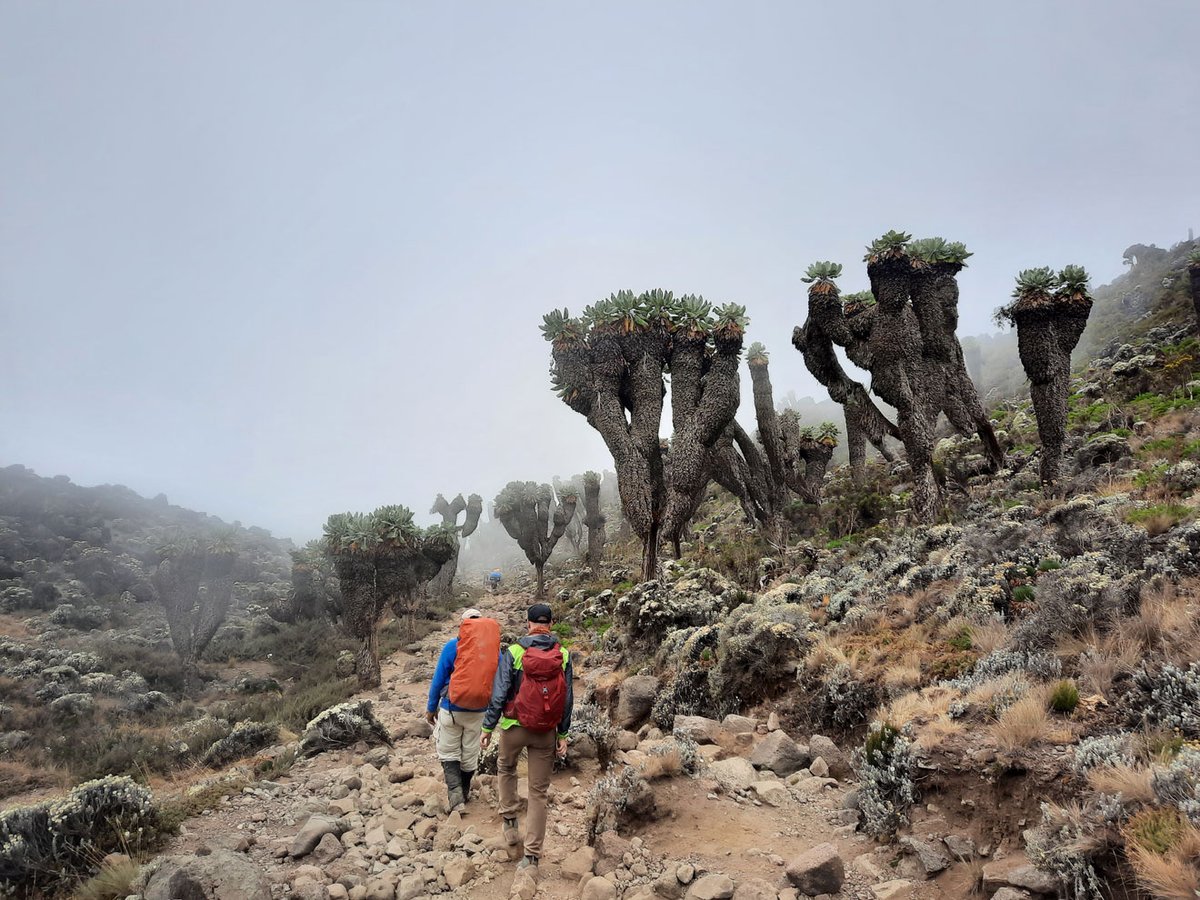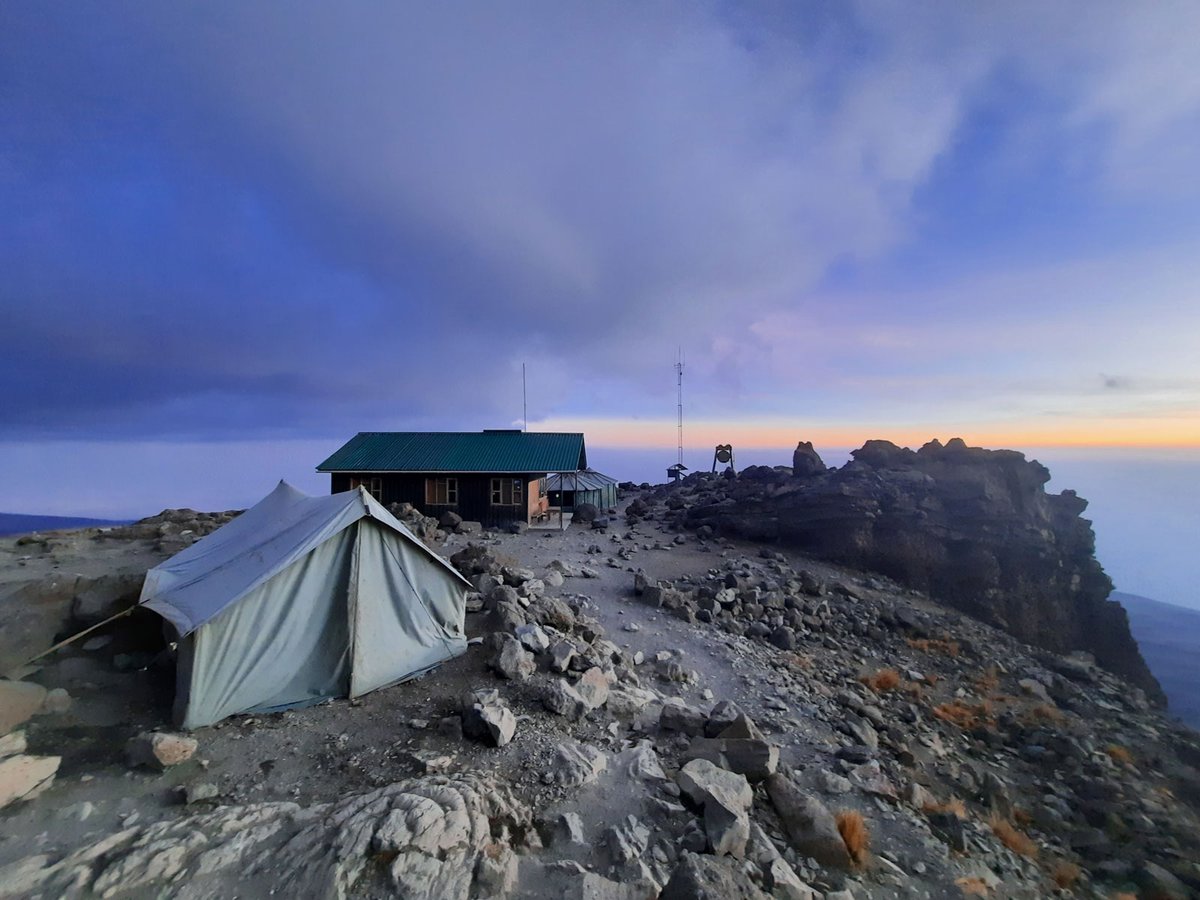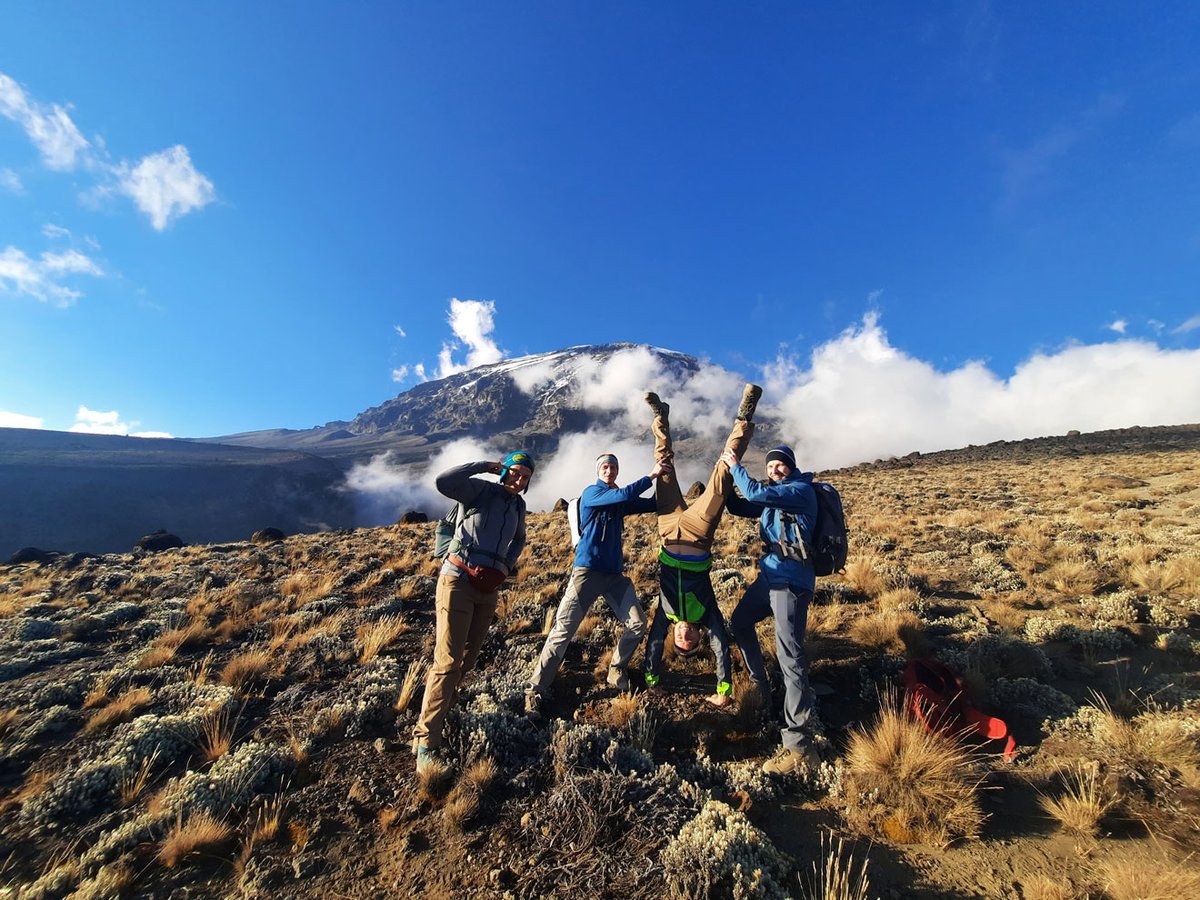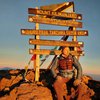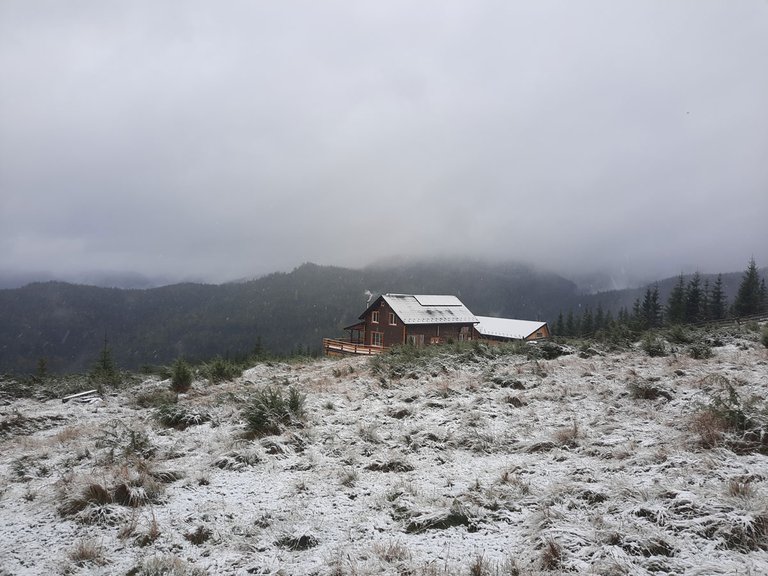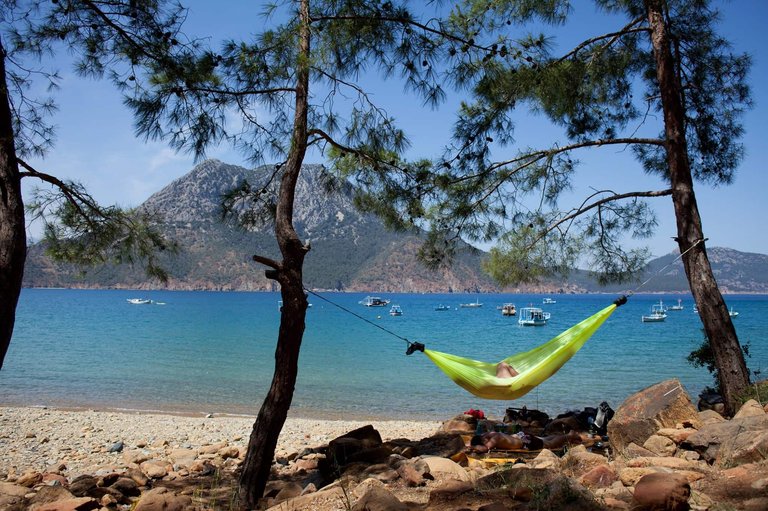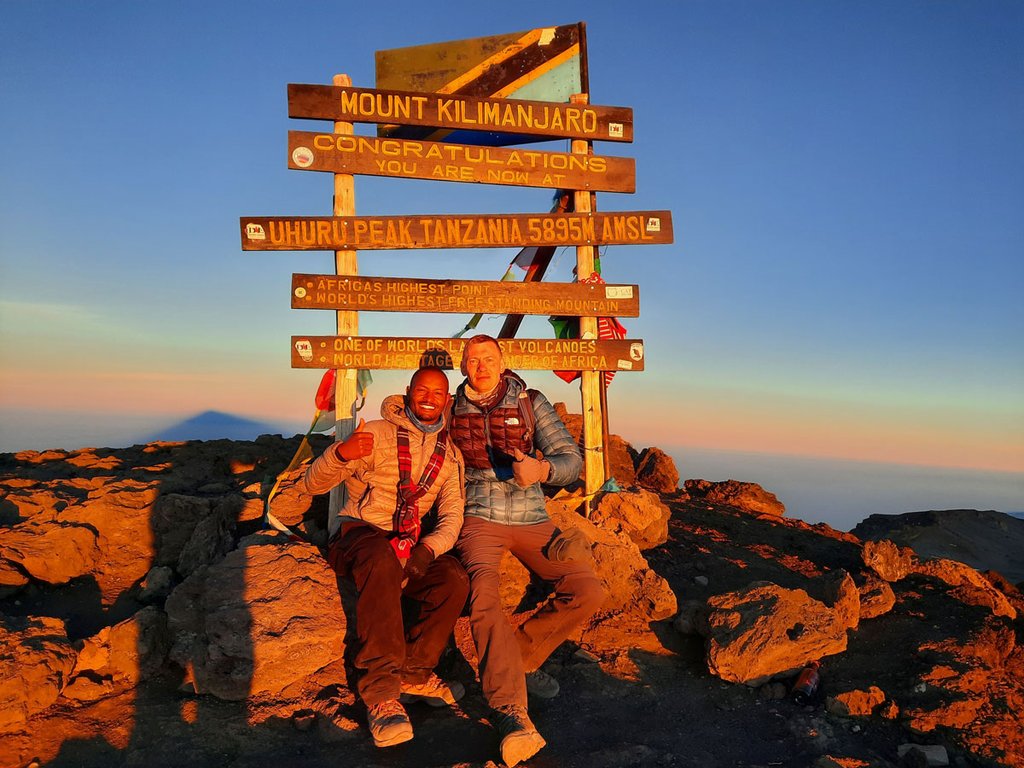
Preparing to climb Kilimanjaro 5895 m
Successfully climbing the Kilimanjaro mountain range, Uhuru Peak (5895 meters), is a dream for many travelers, as it is one of the seven highest peaks on seven continents. In this article, I will tell you about all the important points during the Kilimanjaro climb, try to prepare you for this climb and answer some important questions
Training before the climb
Most days of climbing Kilimanjaro are no harder than regular backcountry trekking. There are several factors that make it a really tough challenge. First, you will be walking for at least 7 days continuously. This puts a lot of strain on all your muscles and joints.
Second, as you climb, the oxygen content in the air drops rapidly. This means that with each breath you get less and less strength. At the top, each breath has about half the amount of oxygen you would normally have.
Thirdly, although most days are not too difficult, the last night of the climb with 1500 meters of altitude gain is an extremely difficult challenge, and the descent will be almost 3000 meters. On this day you will walk for an average of 16-18 hours. To succeed, you need to be in great physical shape. Here are some tips on training for climbing Kilimanjaro. The key factors are cardio strength, leg muscle strength, and endurance. If possible, organize yourself a trekking trip with an ascent and descent of more than 1000 meters twice a week before you go to Tanzania. And don't forget that the biggest difference between those who successfully climb to the top and those who come back down is often just willpower.
Physiological state while climbing Kilimanjaro
Every day, climbing Kilimanjaro, you will burn about 4000 calories. This is almost twice the normal consumption rate. On the night of the summit assault, you will burn much more - 6000 calories. And as climbers say, you have to fuel the climb! So even if you've lost your appetite due to the effects of altitude, you have to keep eating. Even if you don't feel hungry, you have to eat. Before you go to Tanzania, find some dishes (sublimates, or dried foods) that you really like and take them with you just in case.
Drinking a lot is even more important than eating. It is very easy to get dehydrated in the cold, dry air. The symptoms of dehydration are very similar to altitude sickness. It's not uncommon for someone to descend and then find that all they need is a lot of water. You need to drink about 4 liters of water every day (50 ml per 1 kg of weight). As a good rule of thumb, if your urine is yellow, you are not hydrated enough and need to drink more. Try watching yourself like this on Kilimanjaro.
Equipment for climbing a mountain
Good gear starts with your feet. Do not climb a mountain with new boots. Make sure your boots are comfortable and well worn. After your feet, make sure you take care of your head. On the lower slopes you will need something that provides good sun protection. For the night before the assault, you need a really warm hat, or even a balaclava.
Finally, think about layers of clothing. The daily temperature fluctuations can be up to 35 degrees Celsius. The best way to cope with this is to wear 3 layers, in the video “The Big Three” you can familiarize yourself with this rule (Gear - The Big Three) Don't rely on just one jacket. We also recommend gaiters and gloves. There is a lot of dust on Kilimanjaro and a boot full of dust is very uncomfortable.
Other important items are a 4-season sleeping bag, trekking poles for descending, a flashlight for night climbing, lots and lots of sunscreen with a high SPF... We recommend the following list of equipment for climbing Kilimanjaro.
Acclimatization before the climb
The most important reason why people don't climb Kilimanjaro is because they have not adapted well. To avoid altitude sickness, there are three key points to remember. The first is to go slowly. Regardless of your fitness, if you go too fast, your risk of getting altitude sickness increases. A good indicator of your speed is your conversation, if you can't manage the conversation comfortably, you're going too fast.
Secondly, it's hydration, the really serious problems that altitude causes, caused by pressure changes. This happens in the lungs, where fluid from the blood gets into the lungs, leading to inflammation. It also occurs in your skull when fluid moves from your brain into the gap between your brain and skull, causing a pressure headache. If you are not well hydrated (not drinking enough fluids), you will increase the risk of this causing these effects.
And the third is to consider taking Diacarb tablets. This is a drug that has been proven to help the body adapt to altitude faster. However, it's not a cure, and you can still get sick taking it. For most people, it is a safe way to reduce the risk of getting sick. I recommend that you consult your doctor before traveling to check for allergic reactions.
What is the best route to climb Kilimanjaro?
There are only four recommended routes up Kilimanjaro: Machame, Lemosho, Rongai and North (seven in total).
Machame | This route gives a high chance of success in only 7 days. It has an interesting approach because of all the different climatic zones of Kilimanjaro. Its downside is that everyone likes it, so it can be very crowded during peak periods.
Lemosho | This is the best 8-day Kilimanjaro climbing route, but it can also be done in 7 days and 6 days. It offers fantastic views and a really interesting approach from the west of the mountain.
Northern | If money and time are not an issue, then it is worth checking out the Northern Route. It has the same attractive approach as Lemosho, but then heads north where you will find yourself almost alone.
Rongai | This route approaches Kilimanjaro from the north of the mountain, close to the Kenyan border. This is a very quiet route, there is little vegetation here as there is much less rainfall. This means that this route should be chosen during the rainy season and it is usually very peaceful.
When is the best time to plan a climb?
The short answer is to go between June and October, or December and March.
Simply put, Kilimanjaro has a long rainy season in April and May and a slightly shorter rainy season in November. During these periods there is a high probability of rain every day. Outside of these periods, the weather is mostly dry and clear.
Of course, most people want to climb when it's dry, so if you choose one of these two periods, you can expect to meet many other climbers. To mitigate this, choose one of the less popular routes. The northern route is a great choice at this time. If you want to climb when it's quieter or during one of the rainy seasons, then look at the Rongai route. It lies in the rain shadow of Kilimanjaro and is much drier all year round.
Our team chose the Lemosho route because it can be completed in different number of days depending on the physical fitness of the group, and it is also very picturesque and best suited for acclimatization.
When is the best time to go to Tanzania if you want to go on safari?
If you have a few extra days, then going on a safari after the climb is a great option. Tanzania is the perfect place to see wild animals in their natural environment. There are different times of the year that are best suited for a particular safari vacation. For example, if you really want to see the wildebeest migration, then the best time to visit is February or March.
To see a large number of animals, it is best to come in October or April, because this is the time when a large migration of animals occurs between the border of Kenya and Tanzania. When there is a drought in Kenya, animals begin to migrate to Tanzania, and when the rainy season ends in Tanzania, they migrate back. Seeing the migration is something, because whole herds and groups move from south to north.

How to prepare physically before the climb?
The best preparation for climbing Kilimanjaro is to put on your boots and walk as many kilometers as you can. That is, take a week-long hike in the Carpathians before your trip. In winter, there will be snow in the Carpathians, so we recommend planning your hike in such a way that you reach a village or a kolyba every day. If you follow this advice, most days will be quite comfortable for you. Although, no matter how prepared you are, the night of storming the summit is a very difficult experience. You will be climbing for 8-10 hours and descending for 6-8 hours.
Nothing prepares your body better for climbing Kilimanjaro than long walks in the mountains. For a more technical answer, there are four aspects of fitness that you need to work on.
- The first is pure cardio. As you climb, there is less and less oxygen in the air, and this overloads your cardio system. Prepare for this with any intense cardio exercises.
- The second is leg strength. A set of leg exercises, such as squats, lunges, leg presses, work very well.
- The third is endurance. Try doing longer exercises that require real endurance, such as a long bike ride or a really long day of walking.
- Finally, don't forget about your flexibility, as many injuries are caused by a lack of flexibility. So, both before and during the climb, remember to stretch your muscles and warm up.

What are the chances of a successful climb?
Success rates vary greatly depending on the route and guide. The probability of success reported by Kilimanjaro National Park varies from below 50% on shorter routes. For the Lemosho route, the probability of a successful ascent in 7-8 days is 85-90%.
What is altitude sickness?
Altitude sickness (often referred to as AMS) is caused by climbing to altitudes where the air pressure is significantly lower. There is a calculator here that shows how this happens.
By the time you reach the top of Kilimanjaro, the air pressure has dropped to 49% compared to normal pressure levels. The first effect of this is that the lungs contain only half the amount of oxygen they would normally have. This makes any physical activity very difficult. Slowly, slowly is the key.
The second, and most dangerous, effect of low pressure is on those parts of the body where liquid and air meet. The two most important are the skull and lungs. When air pressure is low, fluid enters the lungs and the gap between the brain and skull. In the lungs, this causes something like pneumonia, where your lungs fill with water. In the brain, it causes a severe headache. Together, they can become so dangerous that they can kill you.
Is it possible to climb without porters and local guides?
In a word, no. The National Park Authority does not allow anyone on the mountain without qualified guides, and they set strict minimum guide-to-client ratios that roughly work like 1 guide per 3 people.
Porters are not really mandatory, but if you are not super strong then don't start thinking about it. We recommend 3 porters for each participant to carry everything you need for a comfortable and enjoyable climb.
Are there any age restrictions for climbing?
The Kilimanjaro Park administration does not allow climbers under the age of 12. There are no other restrictions - the oldest traveler to climb the mountain was 75 years old.
How do I plan my Kilimanjaro climb?
To climb Kilimanjaro, you have 2 options. The first option is to plan your trip on your own, but in any case you will have to hire local guides, or use the services of guides who organize trips to Tanzania to climb Kilimanjaro. To use the first option, research all the information and plan everything very carefully, the budget for an independent trip will be about 2500€ - 3000€.
If you choose the commercial travel option, then your budget will be around 3500€ - 4500€, it's up to you. To use the services of a commercial organization, you need to register on the GRA website and then they will do everything for you, you just need to follow the route and listen to your guide.
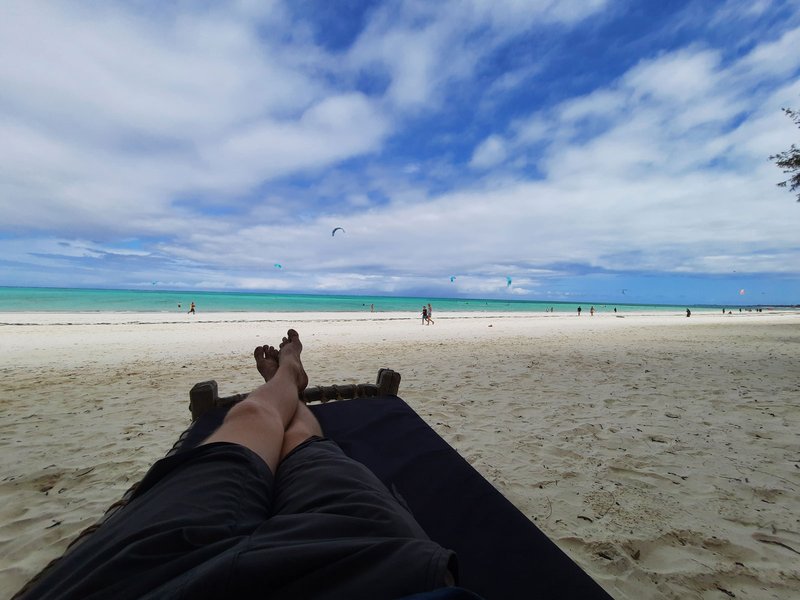
GRA team is your mountain guide! If you want to travel, are looking for adventure and are looking for a company, then you've found us! We are leaving for our next trip soon, so join us.
Climbing Kilimanjaro - Tanzania
- 09.10.2023 - 20.10.2023
